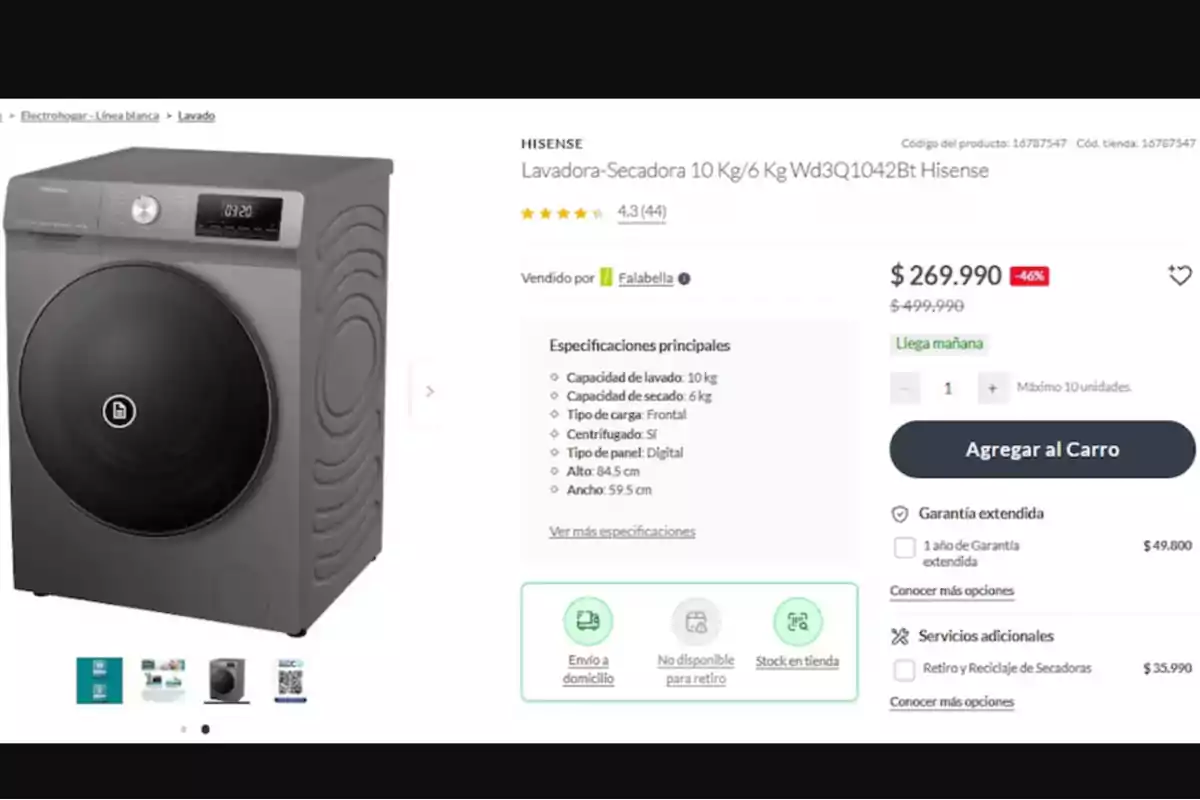
Refrigerators and washing machines are now allowed: price differences with Chile
The government authorized the personal importation of refrigerators, washing machines, and stoves, and comparisons with prices in the neighboring country are soaring
Starting this week, Argentinians can bring refrigerators, washing machines, and stoves from abroad into the country under a new digital scheme that, for the first time, allows white goods to be included in the accompanied baggage regime. This opening has caused immediate interest in finding out whether it is truly worthwhile to bring appliances from neighboring countries such as Chile, where the tax burden is considerably lower.
The regulation allows Argentinians or residents over 16 years old to bring in one unit per year of these items, which were previously excluded by Resolution ANA No. 3,751/94. Although this is a limited measure with specific controls, it legally enables the personal entry of these goods without going through commercial imports.
Price comparison: Chile vs. Argentina
The price differences between Argentina and Chile are considerable and, in many cases, exceed 100%. Below is a comparison of three specific products:

- 1. Refrigerators
- Chile: Samsung No Frost refrigerator, 234 liters – USD 305.20 (about ARS 392,182 at the official exchange rate).
- Argentina: Similar model, 227 liters – ARS 1,013,399.
- Gap: More than ARS 620,000 difference, 158% more expensive in the country.
- 2. Stoves
- Chile: Electrolux gas stove with 4 burners – ARS 701,597.
- Argentina: Same stove – ARS 1,330,999.
- Gap: ARS 629,402 difference, 89.7% more expensive.
- 3. Washing machines
- Chile: Hisense washer-dryer (10 kg[22 lbs]) – ARS 364,297.50.
- Argentina: Same unit – ARS 1,000,000.
- Gap: ARS 635,702, almost 197% more expensive.
Although the models may differ in name or code, the technical specifications are practically identical. The price differences are repeated in almost all the models surveyed.

Is it worth bringing them?
For those living in provinces near the Andes, such as Mendoza, the option of crossing into Chile to purchase appliances becomes very attractive. However, the cost of the trip and the logistics of transportation (due to the size of these products) must also be considered. In addition, products purchased locally offer interest-free installments and home delivery, factors that could offset the price difference.
Even so, the magnitude of the gap is so considerable that, even including transportation costs, in many cases it remains economically advantageous to buy in Chile.
More posts: